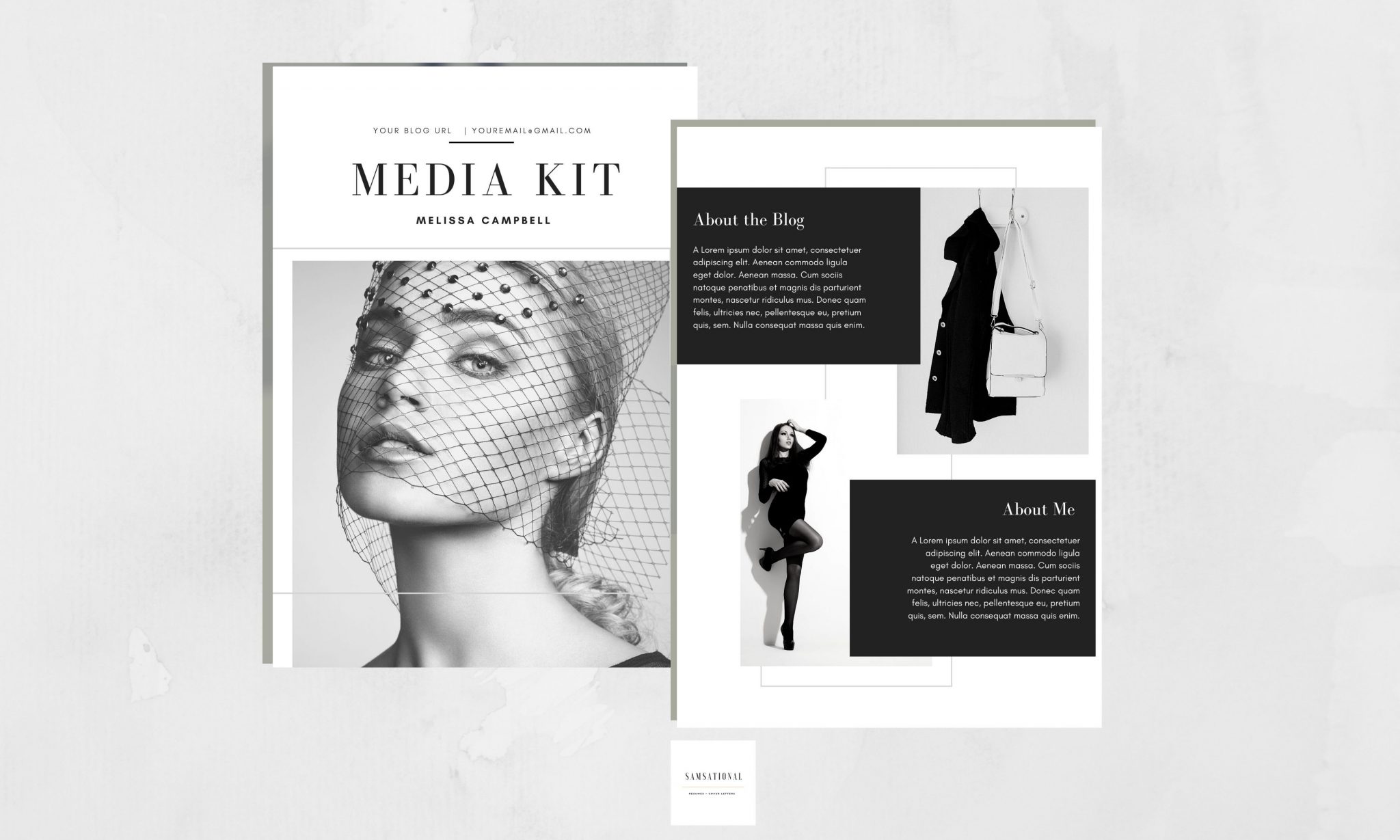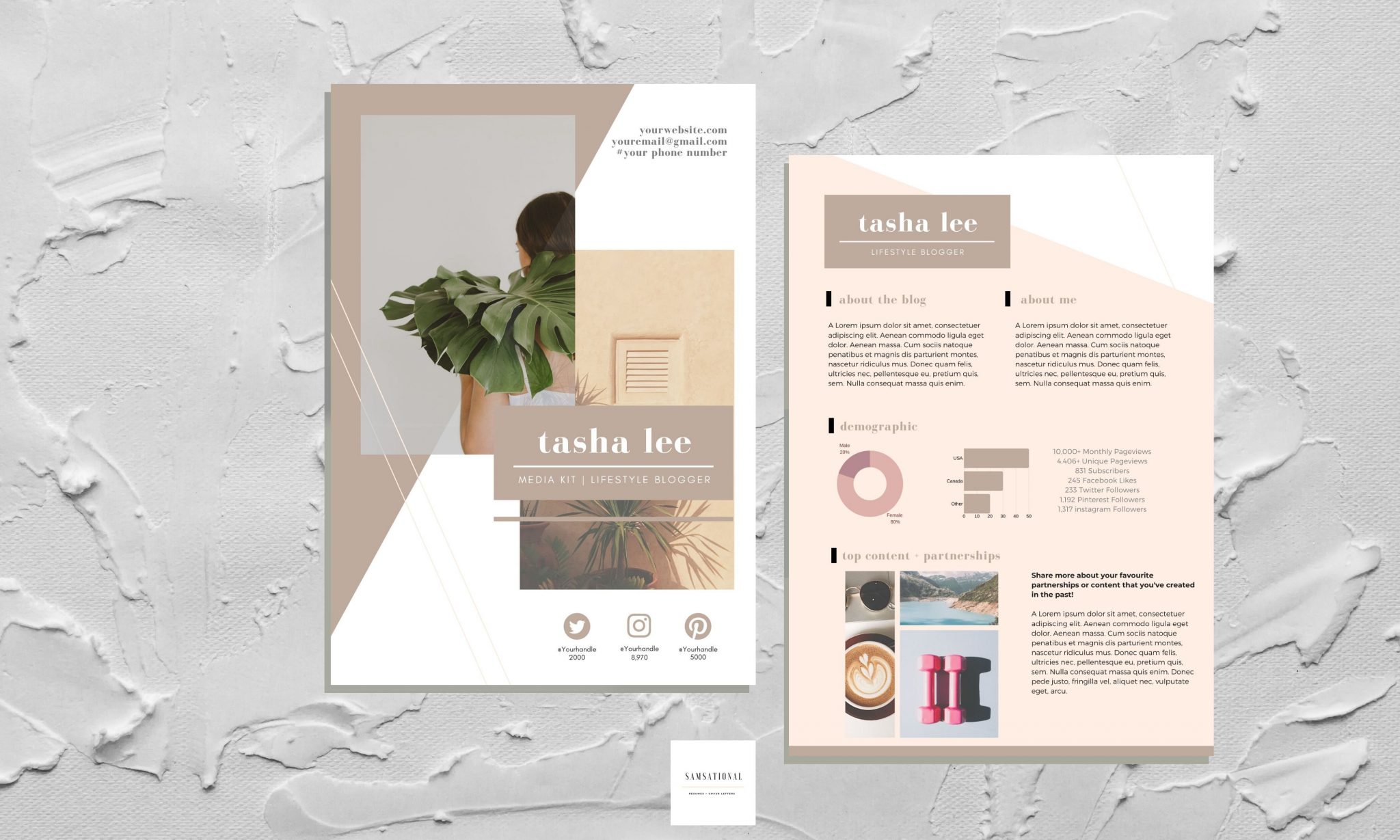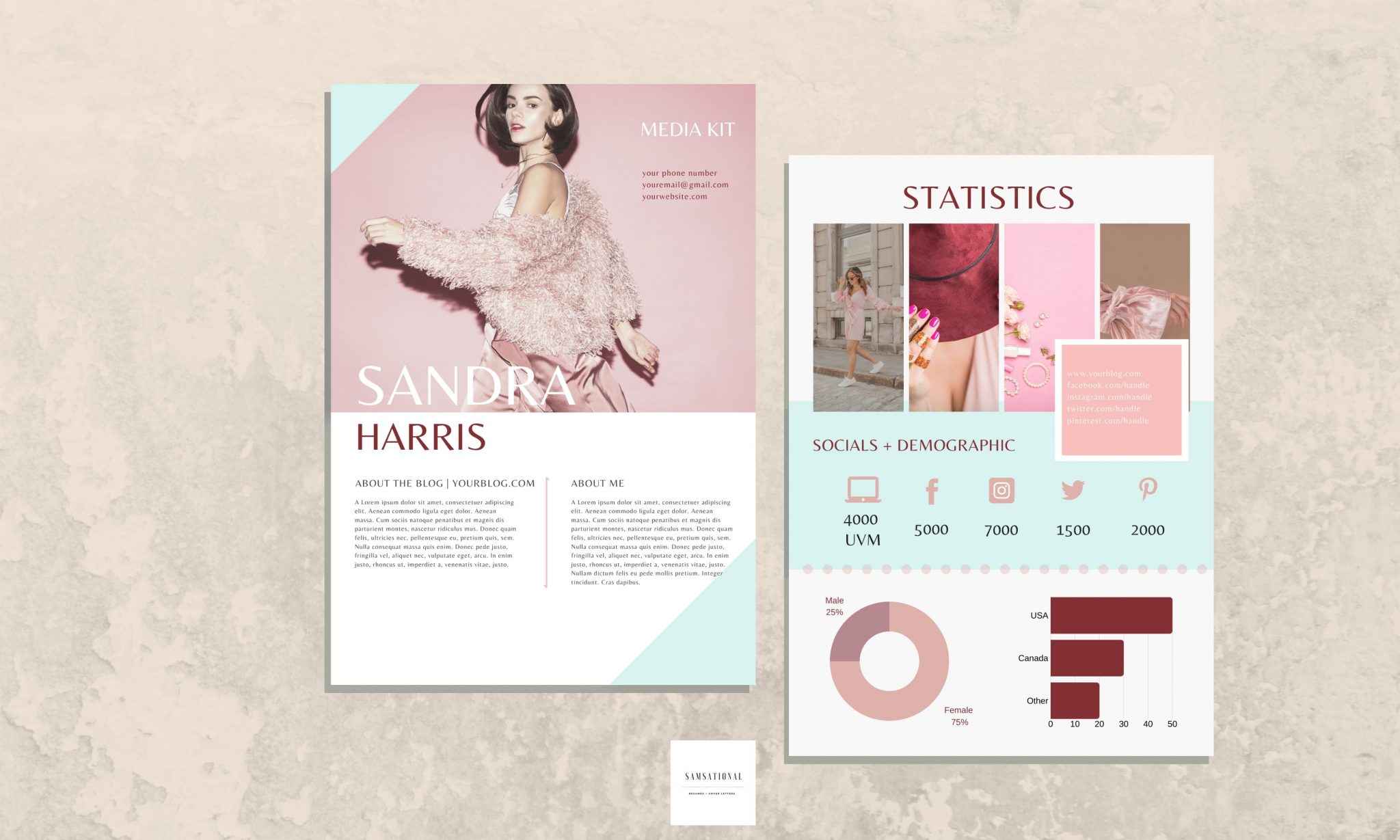What on earth is a media kit? This is definitely one of the questions I had around my second year of blogging. When I first started the blog, I never thought it could become a source of income for me. It was solely for fun and I’d get to meet new people along the way.
As my blog grew, I started to hear chatter about media kits from my fellow bloggers and decided to do some research.
If you’re thinking of starting a blog of your own, having a media kit can help you stand out. It gives you a bit of an edge in looking professional and especially important if you treat your blog like a business. I found that having a media kit also helps companies understand my reach and worth as a content creator.
It takes some time to create a media kit but it’s a powerful document that gives a brand/company everything they need to know about you in a visually appealing format.
PS: In this post, I’m also sharing some exciting news + how you can purchase my Media Kit templates to use!
Here is my guide on how to make a media kit of your own:
Start by Compiling All Important Analytics and Information on Your Blog
This first part takes some time as your compiling information, but I promise it is worth it in the end.
A media kit should display everything a brand or company needs to know about you, your services and your brand. It should showcase information that shows them WHY they should work with you, and provide the necessary information.
Here are the must have information when making a media kit:
Who you are, what your blog/website is about (i.e Your Brand) :
Similar to the About Me page on your blog or website, this is a short introduction to who you are, what your blog is about and why you do what you do. It’s about creating an accurate first impression and general overview of what the brand can expect.
I also recommend including a photo of yourself to make it more personal. I like using photos taken for my Instagram/blog that highlights more of me as opposed to the surroundings. A portrait photo works but again, it depends on what your brand is. It’s always nice to put a face to the name.
Include your background and how + why you got started with your blog. Building a connection with the brand is the key to a successful partnership. Let them get to know you!

Analytics from your blog and social media platforms:
This is the most important thing to put in your media kit! It’s the meat of the document!
Brands want to know details from your blog and social media sites so they can understand how this relationship with benefit both you and them. Providing this information helps brands to determine or forecast possible ROI (Return on Investment) when working with you.
Statistics like page views per month, readership, unique visitors and audience demographics (geographic location, age, marital status etc) are going to be important to include.
Try to put yourself in their shoes. Think about what you would want to know and pull information that you already use to grow your blog.
If you’re a little stuck here is a quick list:
- # Page views per month
- Average page views from the past quarter (4 months)
- Unique visitors per month
- Returning visitors per month
- Bounce rate % (How long a reader stays on your blog)
- Traffic sources (Where is your audience coming from)
- Audience demographics
- Total impressions, reach and engagement % on all social channels (particularly Instagram)
I share more in depth steps on making sure that your blog is set up for success at the inception of it, and the plugins that can help with measuring analytics in my post on Starting a Blog.

Your Previous Partnerships :
A brand is reaching out because you create amazing content that they think their audience would connect with. OR on the flipside, you’re reaching out to share what value you can bring to the table.
In my media kit, I always ensure that I share snippets of my work to give the brand an idea of what to expect and examples of what I’ve created in the past.
Source your favourite content from both your blog and social media that showcase your ability to connect with your audience. This could be a regular series that you write, special Instagram features or your blog posts that perform well.
If you are a new blogger, that’s all good! Share the work that you’ve created and be proud of it. It doesn’t necessarily have to be a paid campaign, it could be anything that you’ve created that you want to share as your best work! We all start somewhere!
START YOUR BLOG
Decide on your policies and rates

One of the most difficult parts of any media kit: base rates!
Because sponsorships are relationships, you need to give companies a good idea of what they get out of partnering with you. Outlining expectations also protects you and ensures both parties understand what this relationship entails. * I have my media kit and rate card as two separate documents, but I know some who have them combined
Make sure you consider these 3 things:
Rates: What will you charge for partnerships?
Many companies offer free items in exchange for promotion but if you want to turn your blog into a business, free items don’t pay rent!
Instead, sit down and come up with prices for things like sponsored social posts, blog posts, Youtube videos and whatever else you plan to offer. This doesn’t have to be the be all end all, but at least it gives companies an idea of what you expect for the value you create, and the amount of work you will be putting in.
I understand that finding a rate to charge your work for is daunting- especially if you are a new blogger. That said, remember that if there is value in the work you do and that should never be overlooked. Perhaps think of how much you would charge on an hourly rate and that can help provide some guidelines to what to charge as a whole. Other charge based on the engagement % of the platforms, so there are a couple ways to do it. I give a few more tips and details here on how to monetize your blog.
What type of campaigns you’ll do:
Not every sponsorship request is going to match your brand.
When I first started doing sponsored content, I started getting messages from companies that didn’t fit into my brand. It took a lot of reflecting and defining myself to understand that I don’t need to say yes to everything. It’s better to have a few partnerships that you really believe in rather than hundreds of partnerships where you don’t support. Deciding what fits best is key to balancing your blogging life and your regular 9-5 if this is your side hustle.
Be true to yourself. If you aren’t excited about a particular company, don’t do it. It will reflect in your content and it won’t be content that you’ll want to put out.
Designing your Media Kit

Your media kit should be a reflection of your brand in just a few pages.
It doesn’t need to be expensive and if you have an eye for design, it can be easily created with free websites like Canva, or using Photoshop/Illustrator. I personally love Canva.
Have fun with the design, use photos and colours. Represent your brand and blog via your kit and ensure that the colour scheme matches the one of your platforms. This helps create consistency in branding.
There are tons of example templates online or on Pinterest so that you aren’t starting from scratch.
I’ve just recently launched my new ETSY store and I’m selling a variety of designs if you’re looking for Media Kits for Bloggers!
Find my ETSY store here : https://www.etsy.com/ca/shop/SamsationalResumes
In a nutshell,
Don’t forget to put a call to action at the end of your media kit. If a company is interested, they will need to know how to get in contact with you.
Something as simple as “To talk about partnership opportunities, contact [name] at [email]” will give everything they need to know after going through your media kit.
And there you have it!
My guide for making a media kit that works! I hope this helps you out and if you’re interested in starting a blog of your own but don’t know how, check out my post HERE.
Till next time,
xoxo, Sam



